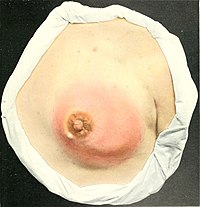
Photo from wikipedia
http://dx.doi.org/10.1590/0100-3984.2015.0142 Lilian Fonseca Lima1, Pablo Rydz Pinheiro Santana1, Antonio Carlos Portugal Gomes1 1. Hospital Beneficência Portuguesa de São Paulo – Medimagem, São Paulo, SP, Brazil. Mailing address: Dra. Lilian Fonseca… Click to show full abstract
http://dx.doi.org/10.1590/0100-3984.2015.0142 Lilian Fonseca Lima1, Pablo Rydz Pinheiro Santana1, Antonio Carlos Portugal Gomes1 1. Hospital Beneficência Portuguesa de São Paulo – Medimagem, São Paulo, SP, Brazil. Mailing address: Dra. Lilian Fonseca Lima. Hospital Beneficência Portuguesa de São Paulo – Medimagem. Rua Maestro Cardim, 769, Bela Vista. São Paulo, SP, Brazil, 01323-900. E-mail: [email protected]. made of gold, although they can be silver or stainless steel. The number of fragments varies and can be in the thousands. In general, acupuncture needle fragments do not cause complications and appear as incidental findings on imaging examinations. They present as small, straight, curvilinear, or semicircular objects, of similar sizes, and can be confused with metallic sutures or clips. Occasionally, these structures can form foreign body granulomas and can even migrate, especially in patients without much subcutaneous fat. Although rare, complications resulting from traditional Chinese acupuncture have been the subject of two systematic reviews. When such complications are severe, they are usually attributable to improper manipulation at sites where there is a high risk of injury to the adjacent organs and structures, which can result in pneumothorax, cardiac tamponade, or spinal injury. They can also be related to the incidental breaking of a needle, which requires surgical removal in some cases. A review of the literature on acupuncture needle fragments remaining in the body of patients identified 29 articles on the topic. Those articles describe fragments that have migrated to numerous sites, such as the urinary bladder, shoulder girdle, spinal cord, right ventricle, L5 nerve root, bulb, carpal tunnel, liver, pancreas, stomach, colon, lungs, and kidneys. In cases in which the patients underwent surgery for the removal of the fragments, there were no major postoperative complications. Acupuncture has also been shown to increase bone activity on scintigraphy. The true prevalence of acupuncture needle fragments remaining in the body is unknown. It is possible that the condition is underdiagnosed because many affected individuals never undergo imaging examinations of the areas treated. Likewise, the prevalence of complications associated with acupuncture remains unknown. To date, there have been few studies of this specific topic. When acupuncture needle fragments appear as incidental findings on imaging examinations, they are regarded as a medical curiosity. Therefore, knowledge of their imaging aspects can be quite useful for radiologists.
Journal Title: Radiologia Brasileira
Year Published: 2018
Link to full text (if available)
Share on Social Media: Sign Up to like & get
recommendations!